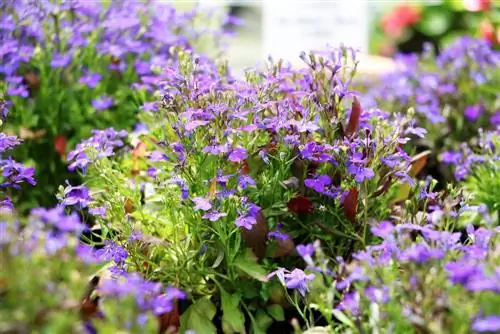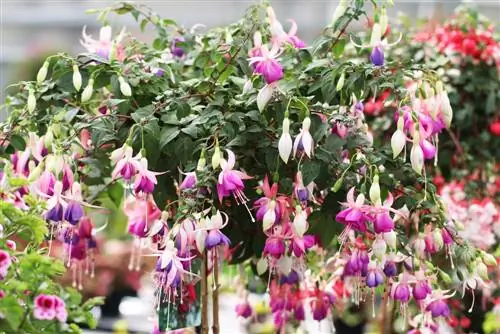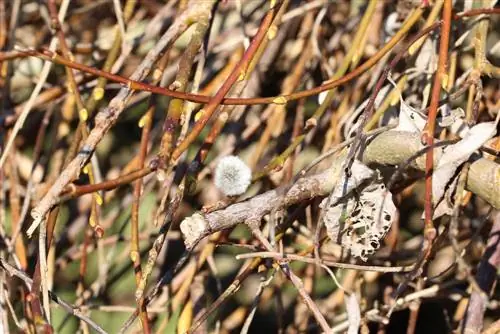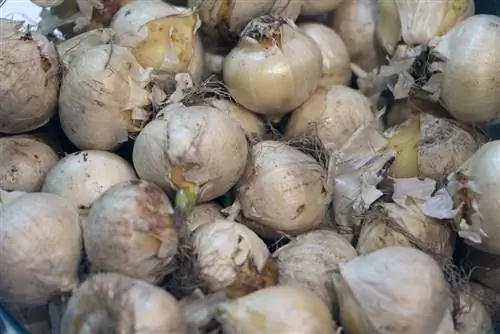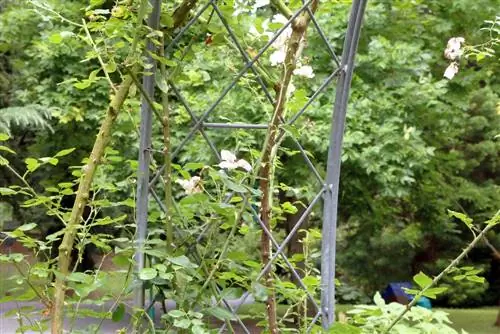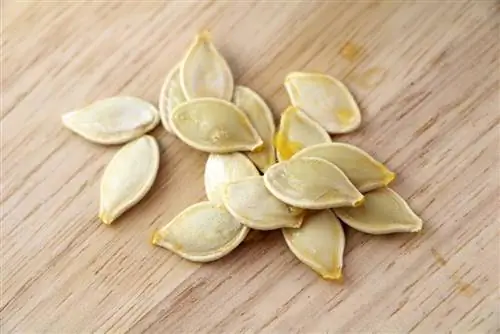- Author admin [email protected].
- Public 2023-12-17 03:39.
- Last modified 2025-06-01 06:48.
Plants strive towards the sun. Mostly. There are also some specimens whose shoots do not provide the strength to stand upright. They just hang down, for whatever reason. That's a good thing, because they're perfect for balconies. Hanging plants are no less beautiful and the variety of varieties is considerable. They are available both flowering and pure green.
Blue Daisy - Brachyscome iberidifolia
Daisies don't just belong in a meadow. The flower pot can also house a daisy. But this is not a real daisy and is different from the wild-growing and well-known representatives. The flower structure is similar, but the color is bright blue or purple. The plant itself also grows bushier and produces abundant flowers. Hanging slightly, it is ideal as a border for balconies.
- blooms from May to September
- enjoys sunbathing
- but also makes do with less light
- Keep substrate evenly moist
- fertilize every 14 days with liquid fertilizer
- remove faded plant parts promptly
Ivy - Hedera helix
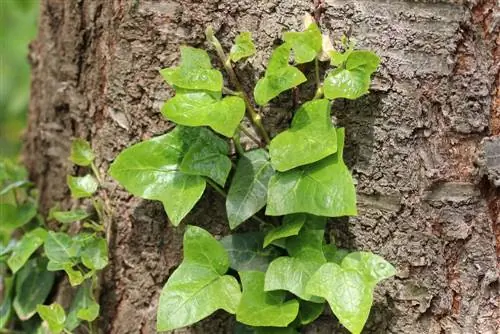
Admittedly, green ivy is a bit boring as a solitary plant for many flower lovers. However, it can provide valuable services as a companion to flowering plants. It creates an eye-catching green break in the colorful flower wall. Whether as a balcony decoration or as a house plant, the fast-growing ivy delivers quick results. But be careful: care is far more demanding than generally assumed.
- evergreen plant decorations
- suitable as a house and balcony plant
- conventional potting soil is sufficient
- water moderately, do not let it dry out
- low dosage liquid fertilization
Tip:
Ivy is poisonous. If small children or pets live in the household, appropriate protective measures must be taken or the attractive leaves must be avoided altogether.
Epipremnum aureum
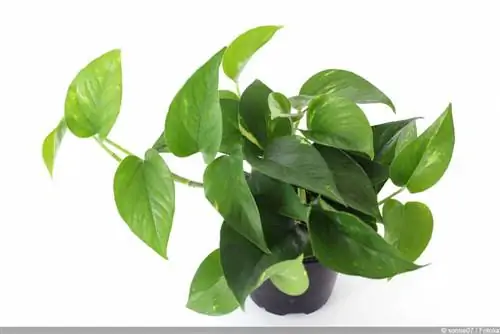
When it rains outside and the beautiful balcony plants cannot be admired, the hanging ivy is waiting inside. The green leaves have slight patterns depending on the variety. Their tendrils can quickly grow up to 10 meters. A green curtain as a room divider is easily possible with it.
- likes light to partial shade
- grows well as hydroponics
- forgives slight negligence when watering
- repot every two years
- fertilize in summer
- disturbing shoots can be removed at any time
Tip:
Cutted shoots do not have to be thrown away. They can first form roots in a glass of water and then be planted. This is how you can get new ivy plants cheaply.
Strawberries - Fragaria
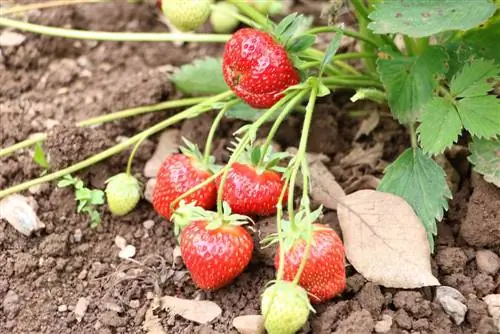
Decorative greenery on the balcony and snacking on delicious fruits at the same time can be agreed upon. Hanging strawberry plants such as the varieties 'Merosa', 'Diamant' and 'Hummi' also cope well with the limited space available in the flower box.
- up to four plants per hanging basket
- sunny and airy location
- the sunnier, the sweeter the fruit
- Potting soil, enriched with compost and horn meal
- stable attachment of the pot necessary
- water regularly
- excess water must be able to drain away
- can be overwintered and continue to thrive the following year
Tip:
So that the delicious berries can go into your mouth without regret, they should only be planted on balconies away from busy roads.
Busy Lieschen - Impatiens walleriana
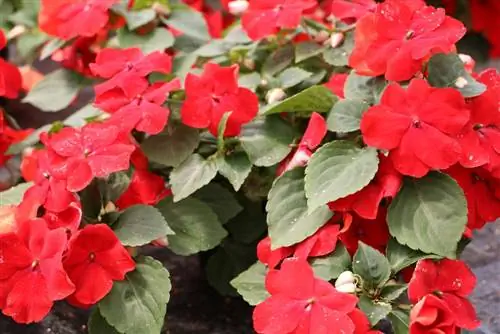
Yes, Lieschen, she's busy. And the preferred activity is flower formation. Much to the delight of the owner, who can get his fill of it for six months. It doesn't represent the distance and the name is a bit old-fashioned, but with the beautiful, colorful flowers that quickly becomes irrelevant.
- Lieschen doesn’t like heat
- Drought is only tolerated for a short time
- In summer it's time to water, water and water again
- Support flower formation with fertilizer every 14 days
- If faded parts are removed, new buds will follow
- Wintering is not worth it
- Buy young plants in May
Gloxinia Morning Glory - Asarina
Gloxinia morning glory is a fast-growing climbing plant. However, its long tendrils can also thrive hanging without a support. Despite their increasing popularity, the sight of them is still not commonplace. For many plant lovers, this is precisely what makes them so attractive.
- can be grown cheaply from seeds
- wide variety of colors
- fast growing and abundant flowering plant
- sunny balcony is popular
- the soil should be permeable
- water regularly in the morning or evening
- don't get the leaves wet
- too much moisture leads to rot
Gold Two Tooth - Bidens ferulifoli
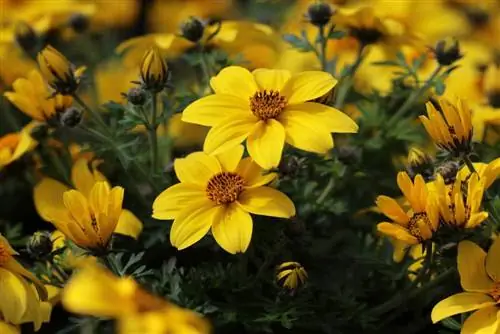
Goldmarie is the common name of this enchanting balcony plant. Its countless yellow flowers compete with the sun. On the one hand it is as noble as gold, on the other hand it is modest to care for. This combination is seductive because the balcony should not mutate into a second workplace. It creates the right atmosphere to end the evening comfortably in a deckchair.
- growing strong
- two plants per box are enough
- Substrate should be permeable
- no further demands on the soil
- bright and sunny places
- water regularly
- fertilize once a week
- no repotting, no cutting
Green Lily - Chlorophytum comosum
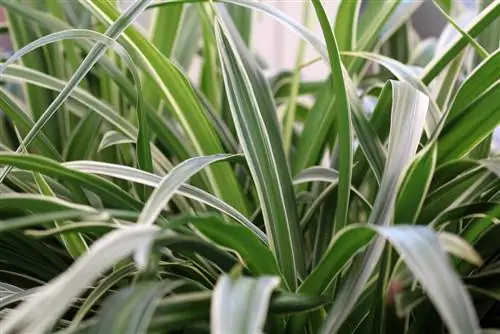
Another hanging plant for living spaces is the spider plant. It is so common that it is neglected. It doesn't look exotic, its appearance is familiar enough to everyone.
It should still be mentioned here for two reasons:
- she is very easy to care for
- It develops a surprisingly beautiful shape with proper care
The spider plant requires little care to live, but the right attention can get the best out of it. She is grateful for:
- a bright place without direct sunlight
- loose, nutrient-rich substrate
- regular watering in summer
- weekly fertilization from March to August
- a sufficiently large pot and occasional repotting
Hanging Fuchsia - Fuchsia Hybride
The hanging classic par excellence. With the multitude of varieties and colorful flower designs, fuchsia never gets boring. She is never stingy with her blooming gifts and so the balcony reliably transforms into a sea of colors in summer.
- long flowering period: from April to October
- for shady and semi-shady locations
- Add some sand to conventional potting soil
- fertilize weekly or with slow-release fertilizer
- do not tolerate drought
- regular watering is mandatory
- Sharpening causes stronger growth
- can be overwintered in a bright and cool room
Cattail - Acalypha hispida
Each individual flower is reminiscent of a cat's tail with its elongated shape. Only the red color doesn't really fit in. There's no question that the cat's tail is a unique flower that doesn't exist anywhere else. In summer, this plant likes to be transformed into a balcony plant. In winter it prefers to escape into the warm interior.
- optimal location is partially shaded and protected from the wind
- slightly acidic soil with a pH of 5.5
- fertilize monthly
- Remove dead flowers as quickly as possible
- water regularly, but avoid waterlogging
- must overwinter at at least 16 degrees Celsius
- close to the heating, the risk of spider mite infestation increases
Tip:
If temperatures rise steeply in summer, the cat's tail should be sprayed with water.
Nasturtium - Tropaeolum
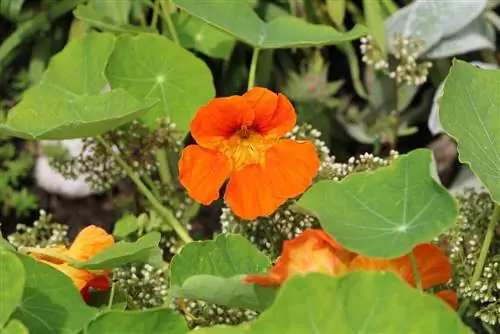
Not only the eye, but also the palate can enjoy the nasturtium. The green leaves and bright orange flowers add a spicy flavor to salads. The climbing variety grows quickly and develops shoots up to three meters long. They can also be cultivated in the flower box.
- Prefer February to April, direct sowing possible from May
- sheltered, sunny spot
- the more light it gets, the more flowers it produces
- grows more sparsely even in shade and partial shade
- normal soil with some clay and sand
- high water requirement, especially on warm days
- fertilize only a little
Kiwi knotweed - Muehlenbeckia complexa
It is often also called wire bush. Maybe because the stems, with their reddish-brown color, are reminiscent of rusted wire. There are lots of small, round leaves lined up on it. The interaction of these two elements creates a unique look whose effect is difficult to describe. You just have to see a kiwi knotweed with your own eyes, then sometimes love at first sight can happen.
- suitable as a house or balcony plant
- sunny to partially shaded
- fresh, humus-rich soil
- fertilize during the growing season
- keep moist
- not susceptible to pests
- also known as Mühlenbeckie
Male loy alty - Lobelia erinus
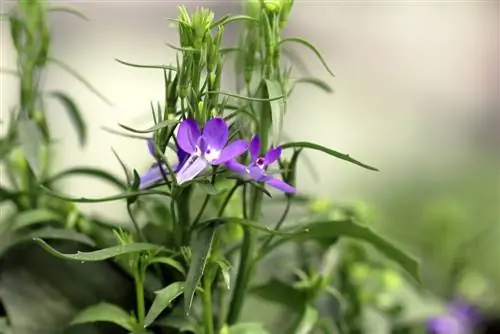
Männertreu has long been a welcome guest on the balcony wall in the hanging version. This plant has some of the smallest flowers among the common hanging plants, but it's the quantity that counts. They grow close together so that the entire crown shimmers bright blue. The delicate flowers are somewhat reminiscent of violets.
- Shoots can grow up to one meter long
- whole plant is covered with small flowers
- blooms until September
- high sun intensity causes rich flowering
- in the shade they are no longer so colorful
- humus-rich potting soil is optimal
- this should never dry out completely
- use low-nitrogen fertilizer
- cut back after main flowering
Petunia - Petunia
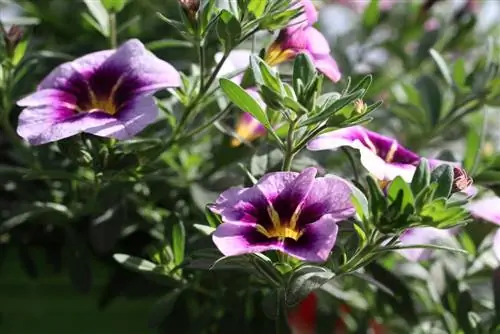
If you are looking for tireless, continuous bloomers, you will find them with petunias. Thanks to their abundance of flowers, they have a long tradition as hanging balcony decorations. Word of their popularity has spread to breeders, who are busy bringing more and more new varieties onto the market. Whether in garden centers or simple supermarkets, petunia is easily available and cheap.
- trumpet-like flowers
- in white, pink, red, violet and blue
- also colorful, patterned and filled
- Plants need a lot of light and can tolerate full sun
- Special petunia soil is available in stores
- have a high need for nutrients
- clean out faded flowers regularly
- susceptible to some diseases and pests
- therefore only buy plants that look vital
Black-eyed Susan - Thunbergia alata

Bright orange and bold black. These are the two color components in which the flowers of the black-eyed Susan are immersed by Mother Nature. It was and remains one of the most popular plants, which can be cultivated either climbing high or with hanging tendrils. In the second form it is also suitable for planting in balcony boxes.
- flowering specimens in different colors are now also available
- grows quickly and lushly
- Administer liquid complete fertilizer every 14 days
- Keep soil moist at all times
- sunny, warm and sheltered place
- can survive the winter in a bright and cool room
Magic Bell - Calibrachoa
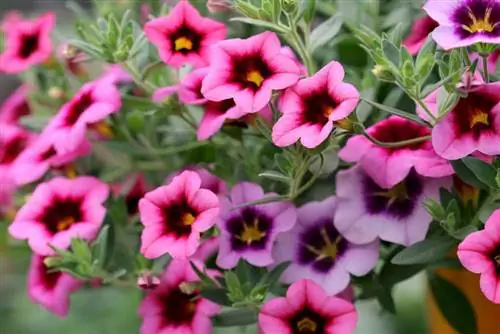
Magic bells are simply magical bells. The flower-studded plant is very reminiscent of the petunia, although its flowers are smaller. It grows beautifully compact, the tendrils reach a length of up to 50 cm. Breeds skilfully play with the entire color palette and bring Mediterranean flair to northern regions.
- annual plant
- many varieties are rain and windproof
- can be combined decoratively with other plants
- offer a sunny but not too hot spot
- use slightly acidic potting soil
- Keep soil moist, avoid waterlogging
- Drought makes them vulnerable to pests
- prune slightly every four weeks
Note:
Because of its appearance, the magic bell is often referred to as a mini petunia.

